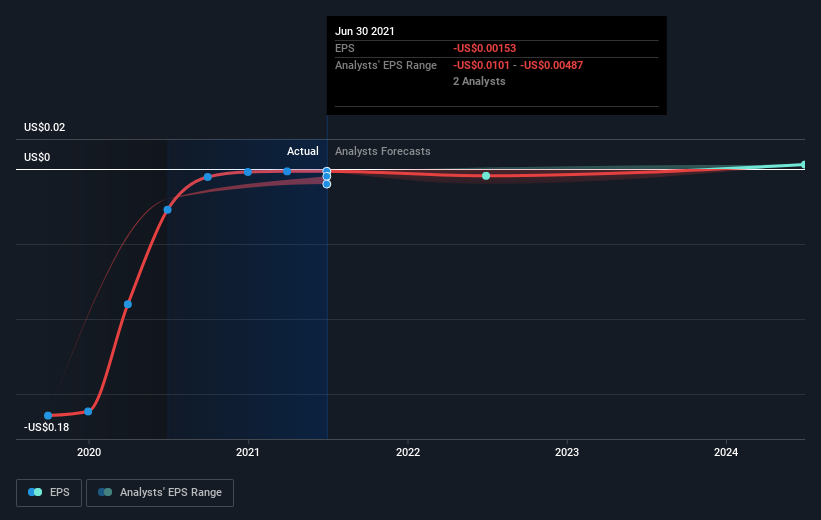Peninsula Energy Limited (ASX:PEN) Has Found A Path To Profitability
We feel now is a pretty good time to analyse Peninsula Energy Limited's (ASX:PEN) business as it appears the company may be on the cusp of a considerable accomplishment. Peninsula Energy Limited, together with its subsidiaries, engages in the exploration, development, and mining of uranium deposits in the United States. The AU$269m market-cap company announced a latest loss of US$1.4m on 30 June 2021 for its most recent financial year result. Many investors are wondering about the rate at which Peninsula Energy will turn a profit, with the big question being “when will the company breakeven?” We've put together a brief outline of industry analyst expectations for the company, its year of breakeven and its implied growth rate.
See our latest analysis for Peninsula Energy
According to the 2 industry analysts covering Peninsula Energy, the consensus is that breakeven is near. They expect the company to post a final loss in 2021, before turning a profit of US$1m in 2022. The company is therefore projected to breakeven around 12 months from now or less. How fast will the company have to grow to reach the consensus forecasts that anticipate breakeven by 2022? Working backwards from analyst estimates, it turns out that they expect the company to grow 72% year-on-year, on average, which is rather optimistic! If this rate turns out to be too aggressive, the company may become profitable much later than analysts predict.
Given this is a high-level overview, we won’t go into details of Peninsula Energy's upcoming projects, but, take into account that typically an energy business has lumpy cash flows which are contingent on the natural resource and stage at which the company is operating. This means that a high growth rate is not unusual, especially if the company is currently in an investment period.
One thing we’d like to point out is that The company has managed its capital judiciously, with debt making up 0.7% of equity. This means that it has predominantly funded its operations from equity capital, and its low debt obligation reduces the risk around investing in the loss-making company.
Next Steps:
This article is not intended to be a comprehensive analysis on Peninsula Energy, so if you are interested in understanding the company at a deeper level, take a look at Peninsula Energy's company page on Simply Wall St. We've also compiled a list of essential factors you should look at:
Valuation: What is Peninsula Energy worth today? Has the future growth potential already been factored into the price? The intrinsic value infographic in our free research report helps visualize whether Peninsula Energy is currently mispriced by the market.
Management Team: An experienced management team on the helm increases our confidence in the business – take a look at who sits on Peninsula Energy’s board and the CEO’s background.
Other High-Performing Stocks: Are there other stocks that provide better prospects with proven track records? Explore our free list of these great stocks here.
This article by Simply Wall St is general in nature. We provide commentary based on historical data and analyst forecasts only using an unbiased methodology and our articles are not intended to be financial advice. It does not constitute a recommendation to buy or sell any stock, and does not take account of your objectives, or your financial situation. We aim to bring you long-term focused analysis driven by fundamental data. Note that our analysis may not factor in the latest price-sensitive company announcements or qualitative material. Simply Wall St has no position in any stocks mentioned.
Have feedback on this article? Concerned about the content? Get in touch with us directly. Alternatively, email editorial-team (at) simplywallst.com.

 Yahoo Finance
Yahoo Finance 
